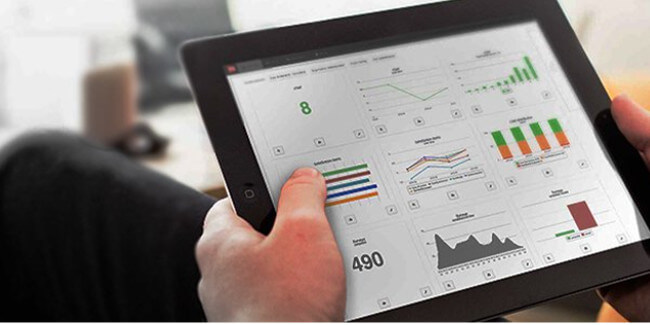Smart businesses know customers are always in the driver’s seat thanks to the introduction of the internet. It has given them a powerful voice and they are not at all afraid to use it.
Alternatively, other businesses do care about their customers but they really don’t feel that asking their feedback generates significant value. After all, they have previously been thriving in their business for decades without actually asking their customers about their thoughts and experiences.
Digital transformation
What we do know is that due to our digitalised world, the majority of continuously successful global organisations have evolved traditional methods to obtain customer feedback – some online, some through email and some over the phone.
Naturally, that got me thinking – over the years how feedback has evolved…

Comment Cards
Before the digital transformation occurred, successful organisations knew the importance of pleasing the customer. This was done by asking the customer directly how they felt about the experience – typically this was used in magazines, restaurants, airlines and service oriented organisations.
This, of course, was presented to the customer during or immediately after the experience. The organisation would then outline all the comments, negative or positive, and use that to improve on their service.
For example, you are a customer who just visited a café which has been around for years. The number of customers in the establishment has fallen steadily over time. To learn the reasons behind the decline, the café offers a comment card to you with the check. You would then answer either one or two generic open ended questions to rate the service and add a comment.
PRO – This process was great in the 1960s-1990s as you are able to get relatively real-time insights immediately after the customer’s experience while it is fresh in their mind.
CON – Unfortunately, looking through all these comments takes time, trying to find a pattern in the responses can be challenging and many times it could be hard to read ranges of messy/rushed handwriting.
This method was (and in many cases, still is) effective to learn the experiences of someone who is a frequent customer or first-time user.

Customer Feedback
When running a café, it is great and relatively simple to have access to real-time feedback. Now what about when a customer has purchased a product to be installed in their house. Instead of immediate feedback, the customer would use the product over a period – maybe after a month or a year. The company would arrange for a call center to call the previous customers and ask them a series of feedback questions in order to improve the experience for existing customers and to obtain new customers.
- Collect unlimited feedback
- ■
- Free 14 day trial
For example, you have been using ABC air-conditioners for a year now, a call center agent from their company calls up and then asks you questions surrounding how your experience with the current air conditioner is and what potential issues you are having with it or what you would like to improve on. The call center agent can also use rating systems where they ask you on a scale from 1-10 about the service or quality of the product.
PRO – These are all great insights to the ABC company on how to improve on their products. It can be an interactive experience where you as a customer can feel like someone is really listening to your feedback and taking your praise and criticisms seriously.
CON – Unfortunately, it is time consuming and tedious to call every customer. It is also hard to measure this sort of feedback and scale it to see what you could uncover. This is also not real-time and no longer fresh in the minds of the customers so the feedback they could give would often be irrelevant. This process started in the 1950s and still a number of global organisations use it as certain customers prefer to talk to a real human-being.
This method is still frequently used in financial, utilities and educational sectors. This can also be catered to a specific customer.
Email Surveys/Feedbacks
As previously mentioned, when generating call center feedback it was hard to identify and measure any trends or common issues. This changed in the 1990s when emails became an important medium of communication. Today almost every company had a website domain and was able to sell their goods and services online.

For example, within minutes of purchasing your coffee machine from IKEA, you receive an email from IKEA thanking you for purchasing and then followed it up with a click to a web-page with a survey you can decide if you want to complete. You may choose to reply to it immediately or leave it in your inbox to reply to another day, if at all.
PRO – Most companies made the change as they were quick to realize it would be a great way to digitally and instantly send a survey to potentially all the customers that purchased a service or product with a simple click of a button. These type of surveys allow data to be captured straight from the customer.
CON – Unfortunately, even if one does not reply immediately to these surveys, too many of these emailed surveys becomes overwhelming and the method loses much of its value. Because of that, the volume of E-mail responses began to decrease substantially. Decision makers know that a smaller sample size can lead to skewed, non-objective and inaccurate results.
What is also interesting is that this method is generally more catered to someone who is an existing customer.
Social Media Platforms
With emails paving the way for the digital world, it would not be complete without the introduction of smartphones and tablets which came about in the mid-2000s.
It changed the way companies communicated with customers because all of a sudden everyone had a voice and weren’t afraid to use it. Later on, social media has changed the customer experience game. Customers now have social media sites like Facebook, Twitter, TripAdvisor or review sites on which they can share their positive or negative experiences with a wider audience. Your customers can publicly ask questions and leave feedback directly on your social media channel/profile. Other potential customers can see how you interact with your customers and take into consideration for future purchases.

For example, you took a flight on KLM airlines and had positive or negative experience, you can so very easily go onto the KLM Facebook page and leave feedback directly to the page which would be seen immediately by their social media marketers and everyone else in that page. The representative can respond very quickly to you with an offer of thanks or potentially a solution to an issue or query you are facing. Most of the time, other fellow customers of the brand would give advice as well.
PRO – This extended reach is incredible. Instead of your customers telling a couple of their friends about a great experience with your company, they can now tell thousands via a post through social media. It can be shared and reposted to even more wider audiences, thus increasing your brand.
CON – So what used to be a private interaction with your customer is now viewable by everyone. Companies can no longer hide from negative feedback posted on the web. All feedback whether positive or negative is out in the open. It is also hard to measure this sort of feedback and scale it to see what insights you could uncover.
This method is generally more suitable for someone who is an existing and potential customer.
Real Time Feedback Forms
In this day and age all companies know the importance of embracing the digital environment, be it websites, web shops, applications or feedback. Most customers look at a company’s website before actually contacting said company, whether it is for purchasing a service or product or even getting information about the company or the product. With the invention of mobile phones and tablets, it has become even more apparent and easier to check a brand’s website from almost anywhere in a matter of seconds. The concept of real-time feedback and immediacy has forced the survey industry to wake up and create new means of obtaining relevant feedback from their visitors on their website.
For example, you’re looking to purchase a coffee machine from Miele and you go to the website with this specific goal in mind. After looking at the prices, you decide to leave. How can Miele know why you did not make the purchase? Was it a buggy website? High prices? Long delivery period? Were you simply browsing? Instead, as soon as the customer displays behaviour recognized by software as leaving the website before completing a purchase (such as dragging the mouse cursor away from a web-page) a feedback form pops-up as if it were a customer service agent who can receive brief but valuable insight as to why they chose to abort the experience without potentially having met their goal. If you were to visit the store in person, you would have a normal interaction with a salesperson. When it is on a website, it is far harder to learn and observe how your experience was, allowing for future experiential improvements.
PRO – Businesses can now learn to connect the dots between the given feedback and the customer demographic. Digital feedback has allowed customers to engage and provide the proper information at the point of experience so seamlessly. Leveraging off the influx of increased mobility allows for more accurate responses since the experience is still fresh in the mind of the customer.
“This new method of feedback collection is not only more effective, cheaper and simple to deploy, but allows you to really dig deep and find out measure the results of that feedback and analyse it to gain valuable quantitative AND qualitative insights into a customer’s experience.“
Still a Challenge – Improving the customer experience is a challenge in every single sector that will not be dwindling anytime soon. Staying on the cutting edge of obtaining customer feedback will ensure a great advantage for businesses compared to ones who often overlook or do not optimize or evolve with new technological advances and this will be the key to remaining effective, efficient, profitable and sustainable in the long-term. Social media having changed the game of feedback, everything is out in the open but what you want to really do is provide them with a tool that they can talk to you directly with valuable results.

This was the original idea of creating Mopinion in the first place to be able to speak to the customers’ needs and using their feedback to uncover important insights that are measurable.
Ready to see Mopinion in action?
Want to learn more about Mopinion’s all-in-1 user feedback platform? Don’t be shy and take our software for a spin! Do you prefer it a bit more personal? Just book a demo. One of our feedback pro’s will guide you through the software and answer any questions you may have.







